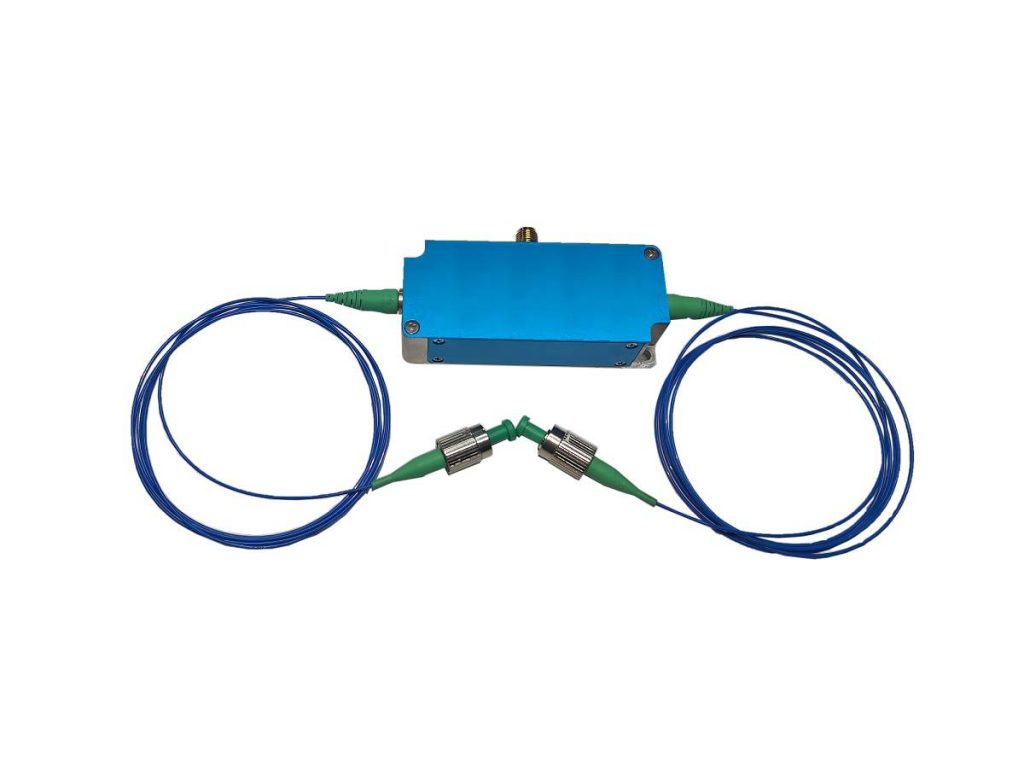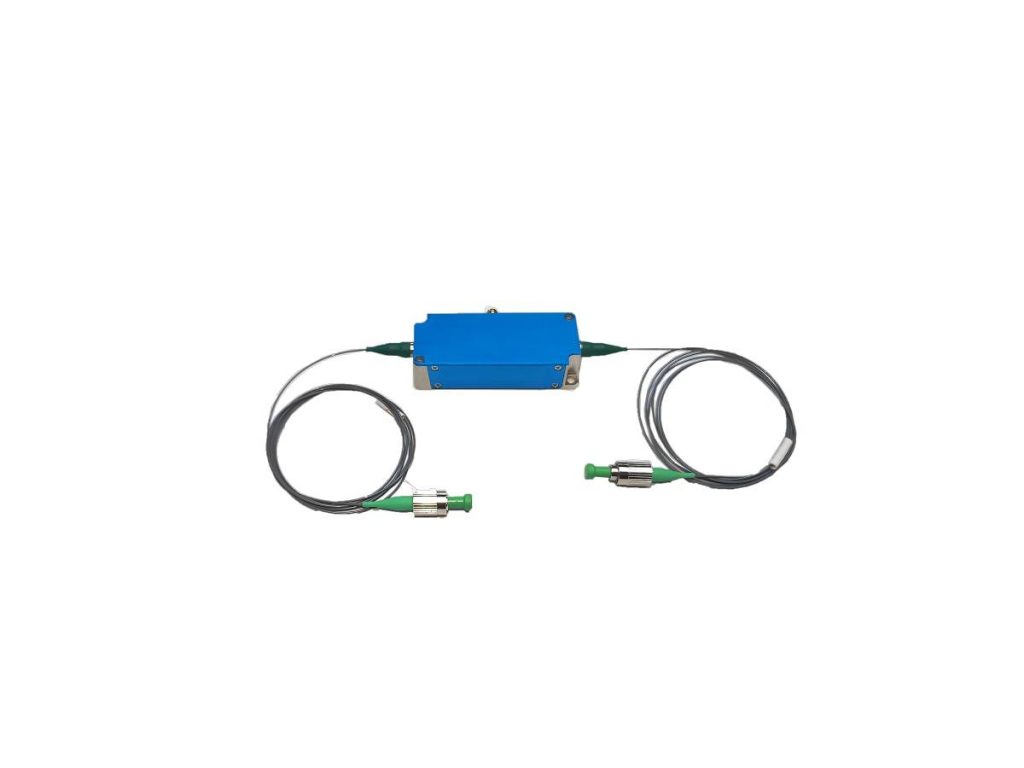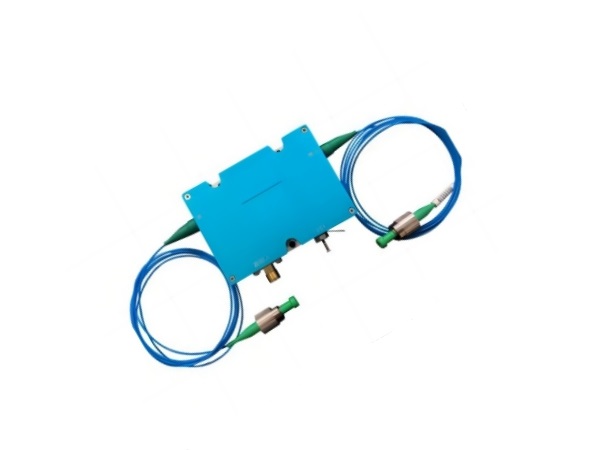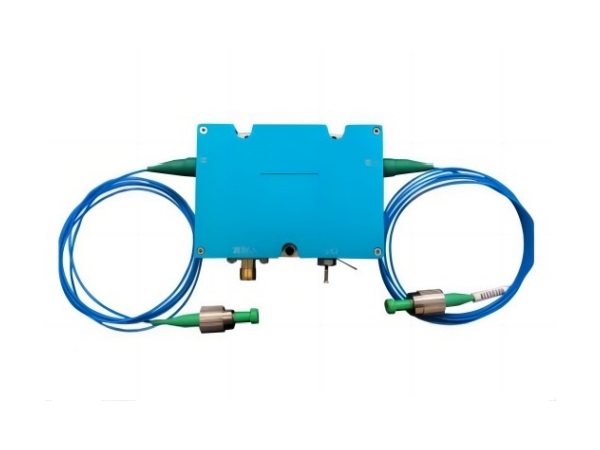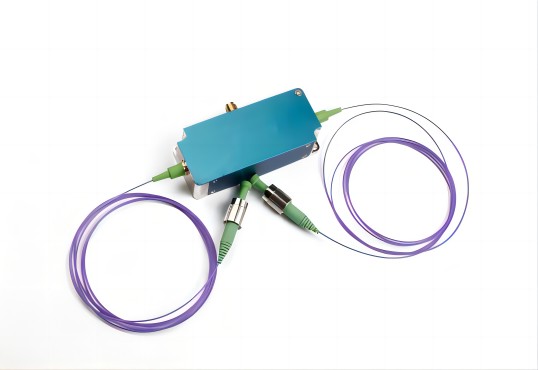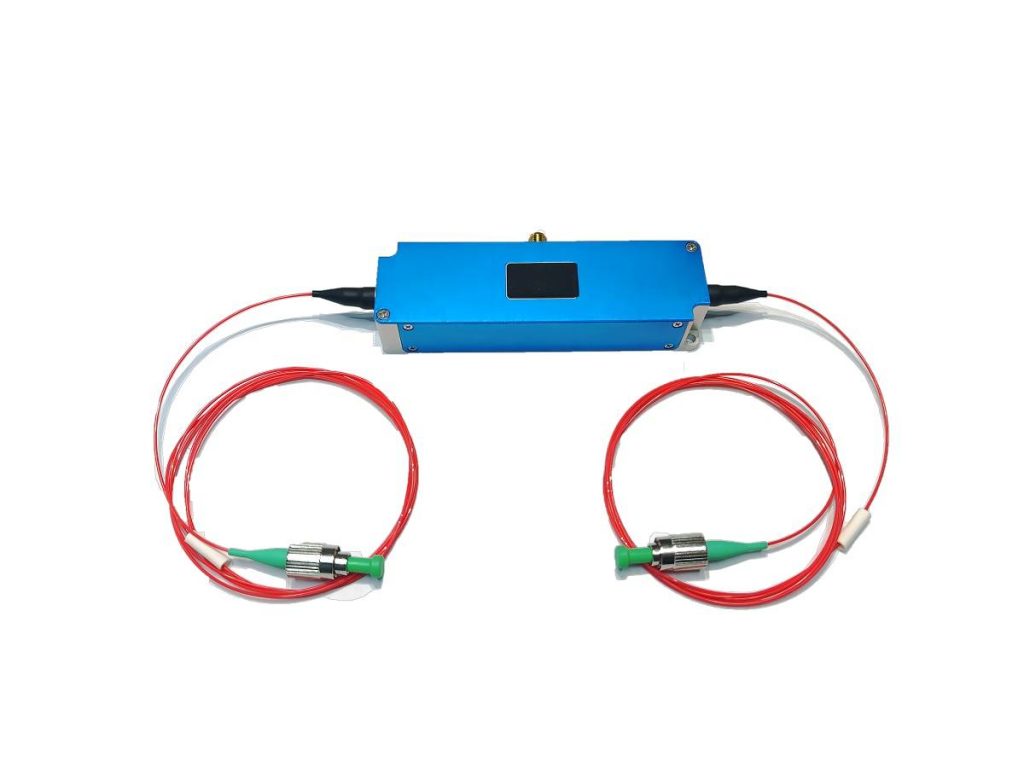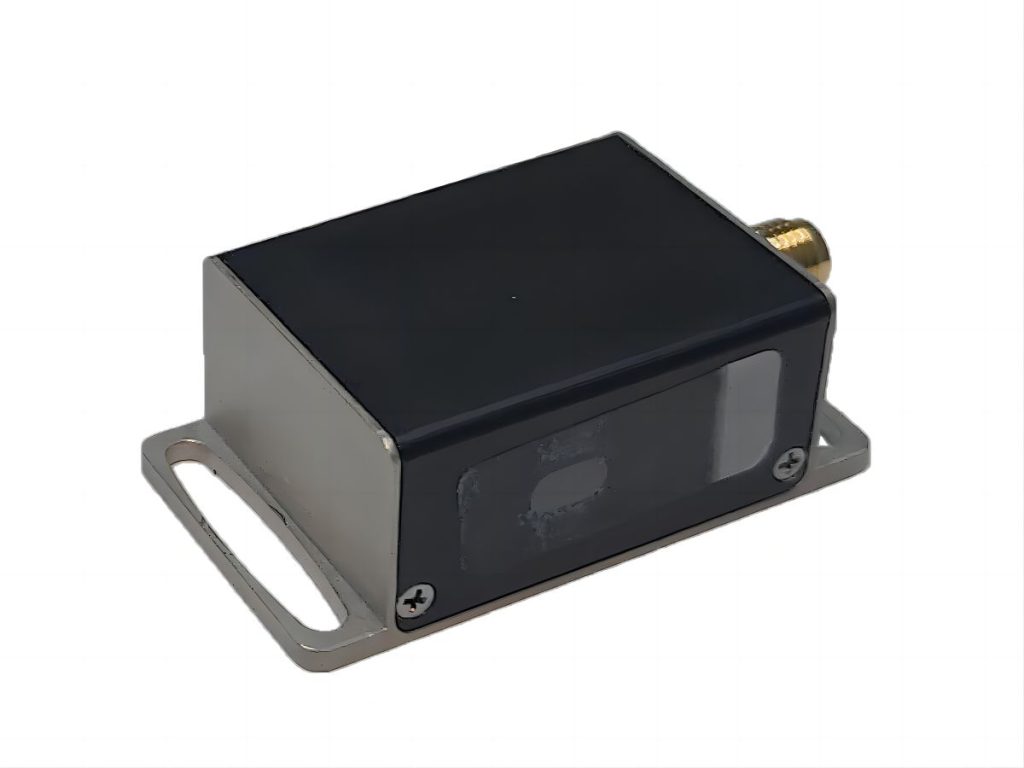Free Space AOM: Advantages and Applications
The acousto-Optic modulator (AOM) is a device that uses sound waves to modulate the properties of light waves. This technology has extensive applications in optical communication, spectroscopy, laser displays, and various other fields. Among the various types of AOMs, the free space AOM stands out due to its unique advantages and potential applications. This article delves into the working principles of free space AOMs, compares them with other types of AOMs, and explores their significant advantages and applications.
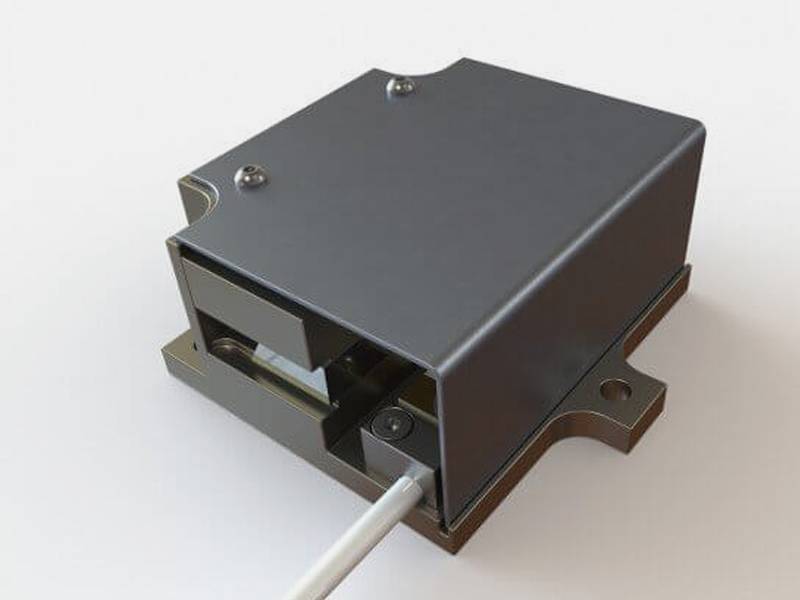
Working Principle of Free Space AOM
Free Space AOMs (Acousto-Optic Modulators) utilize the fascinating interaction between sound waves and light waves to manipulate a light beam. Here’s a breakdown of the key steps involved:
1. From Electrical Signals to Sound Waves
The core of the AOM is a piezoelectric transducer. This specialized component acts like a translator. When you apply an electrical signal, typically in the Radio Frequency (RF) range, the transducer vibrates at a specific frequency.
These vibrations create ultrasound waves, which are sound waves with frequencies higher than what the human ear can perceive. The frequency of the ultrasound wave directly corresponds to the frequency of the applied RF signal.
2. Light-Sound Interaction and the Grating Effect
The ultrasound waves travel through a carefully chosen optical material. Common materials include quartz, germanium, or lithium niobate. These materials have a special property – their refractive index (a measure of how much light bends as it travels through the material) changes slightly as the ultrasound wave compresses and expands the material.
This creates a periodic variation in the refractive index within the material, essentially forming a dynamic optical grating. Imagine a series of thin alternating regions with slightly different refractive indexes, much like a diffraction grating used for splitting light.
3. Bragg Diffraction and Light Control
When a light beam enters the AOM and encounters the moving refractive index pattern, a phenomenon called Bragg diffraction occurs.
Bragg diffraction dictates a specific angle at which light diffracts most efficiently from the grating. This angle depends on the wavelength of the sound wave (Λ) and the wavelength of the light wave (λ), according to the Bragg condition:
2Λsinθ = nλ
- Λ (Lambda) is the wavelength of the sound wave.
- θ (Theta) is the incident angle of the light beam.
- n is the diffraction order (usually 1 for AOMs).
- λ (Lambda) is the wavelength of the light wave.
By adjusting the RF signal frequency, you control the ultrasound wave’s wavelength (Λ). This, in turn, affects the Bragg diffraction angle (θ). This manipulation allows you to:
- Deflect the light beam: By changing the incident angle (θ) slightly relative to the Bragg angle, you can steer the diffracted light beam in a controlled manner.
- Modulate the intensity: By varying the RF signal intensity, you can control the strength of the dynamic grating. This allows you to control the amount of light diffracted, effectively modulating the intensity of the transmitted light beam.
4. Frequency Shifting
An interesting consequence of light-sound interaction in the AOM is the ability to shift the frequency of the light wave. The diffracted light emerges with a slightly altered frequency compared to the incident light. The amount of this shift is precisely equal to the frequency of the ultrasound wave, which is in turn controlled by the applied RF signal.
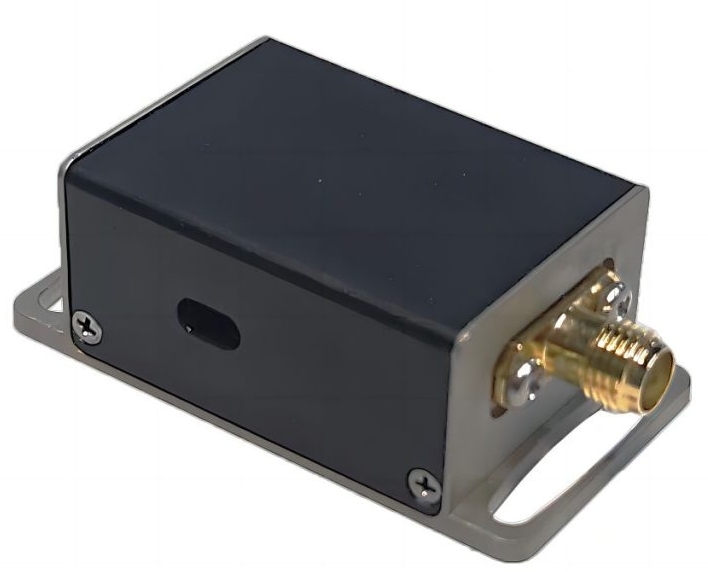
Advantages of Free Space AOM
Free space AOMs offer several significant advantages over other types of AOMs, making them suitable for various high-demand optical applications.
- High Power Handling Capability: Free space AOMs can handle high-power laser beams, making them ideal for high-power laser systems. In free space, managing heat dissipation and maintaining beam quality are simpler compared to fiber or integrated optical paths, where high power can lead to loss and damage.
- Flexible Beam Operation: Free space AOMs allow flexible manipulation of the light beam, including deflection, modulation, and frequency shifting. This flexibility is crucial in experimental and industrial applications, enabling various configurations in three-dimensional space to meet different experimental and application needs.
- Wide Bandwidth and High-Frequency Modulation: Free space AOMs typically offer wide bandwidth and high-frequency modulation capabilities, suitable for fast signal processing and modulation requirements. Their response speed can reach the nanosecond level, making them suitable for high-speed optical communication and data processing applications.
- High Diffraction Efficiency: Free space AOMs generally have high diffraction efficiency, converting most of the incident light energy into modulated output light. By optimizing design and material selection, diffraction efficiencies can exceed 90%.
- Ease of Integration and Upgrading: Free space AOMs can be easily integrated into existing optical systems. By adjusting the RF signal and optical path configuration, functionality can be upgraded. In laboratory environments, the adjustment and maintenance of free space AOMs are relatively simple, supporting rapid experimental iteration and development.
Comparison with Other Types of AOMs
Acousto-optic modulators (AOMs) come in three main configurations: Free Space AOMs, Fiber AOMs, and Integrated Optic AOMs. Each type offers distinct advantages and disadvantages depending on the specific application. Here’s a comparison highlighting their key characteristics:
| AOM Type | Description | Advantages | Disadvantages |
| Free Space AOM | Light beam propagates through air or another transparent medium. Offers the most flexibility in optical path design. | High power handling capability, Flexible optical path | Bulky, complex to miniaturize |
| Fiber AOM | Light is confined within an optical fiber, ideal for integration with fiber-optic systems. | Integrates well with fiber optic systems | Lower power handling capability, Limited flexibility in optical path |
| Integrated Optic AOM | Miniaturized device fabricated on a chip, suitable for low-power applications. | Compact size, Low power consumption | Lower power handling capability, Limited flexibility in optical path, Complex and expensive to manufacture |
Applications of Free Space AOM
| Function | Description | Example Applications |
| Laser Beam Intensity Modulation | Controls the power of a laser beam, allowing for continuous or pulsed operation. | Laser printing, material processing (cutting, ablation) |
| Frequency Modulation | Alters the frequency of the laser light. | Doppler velocimetry, spectroscopy |
| Frequency Shifting | Shifts the frequency of the laser light by a specific amount. | Tunable lasers, signal processing |
| Laser Pulsing | Creates short, high-intensity laser pulses. | Lidar (laser radar), laser pumping |
| Laser Beam Steering | Controls the direction of the laser beam. | Laser scanning, optical trapping |
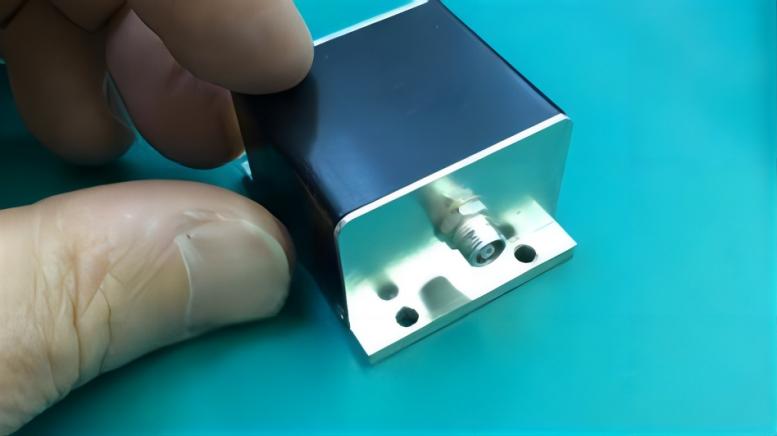
Conclusion
Free space AOMs offer distinct advantages in high power handling, flexible beam manipulation, wide bandwidth, high-frequency modulation, and high diffraction efficiency. These advantages make them suitable for a wide range of demanding optical applications. Compared to other types of AOMs, free space AOMs excel in flexibility and high-power applications. Their significant role in research, industry, and communication underscores their importance and potential for future technological advancements. As technology progresses, the performance and application scope of free space AOMs are expected to expand, further enhancing their relevance and utility in various fields.

